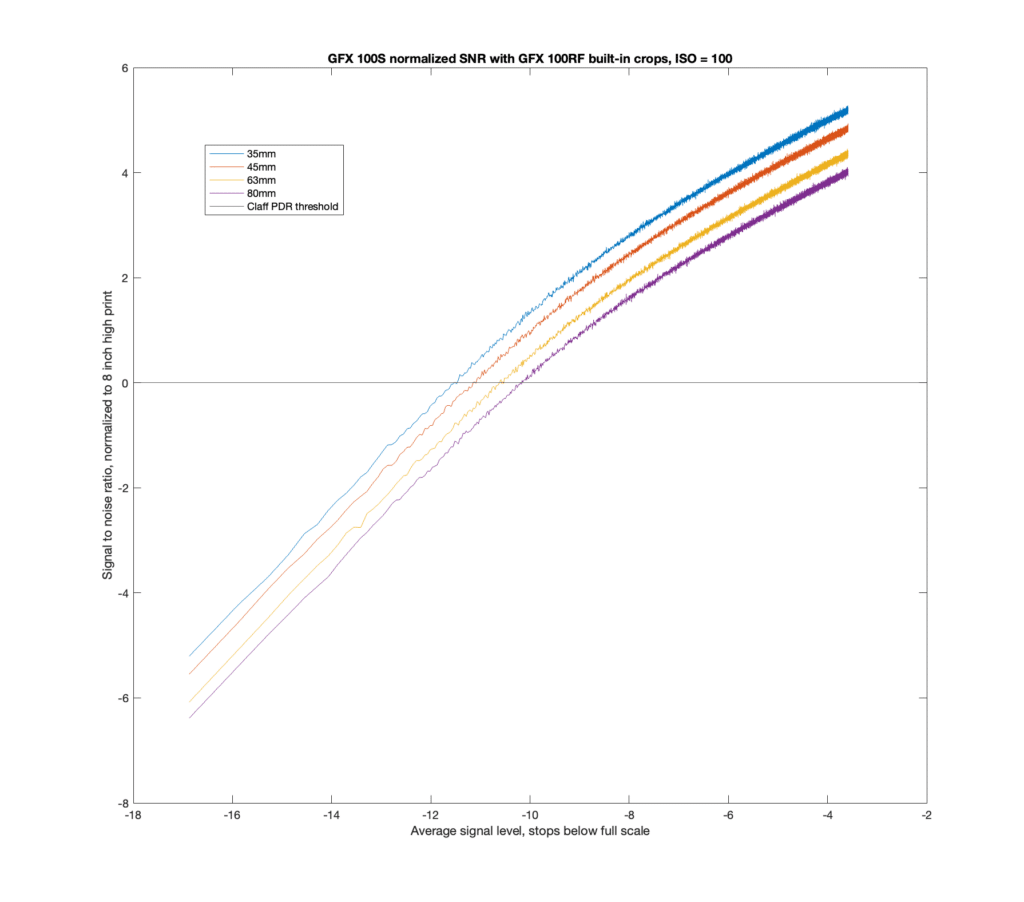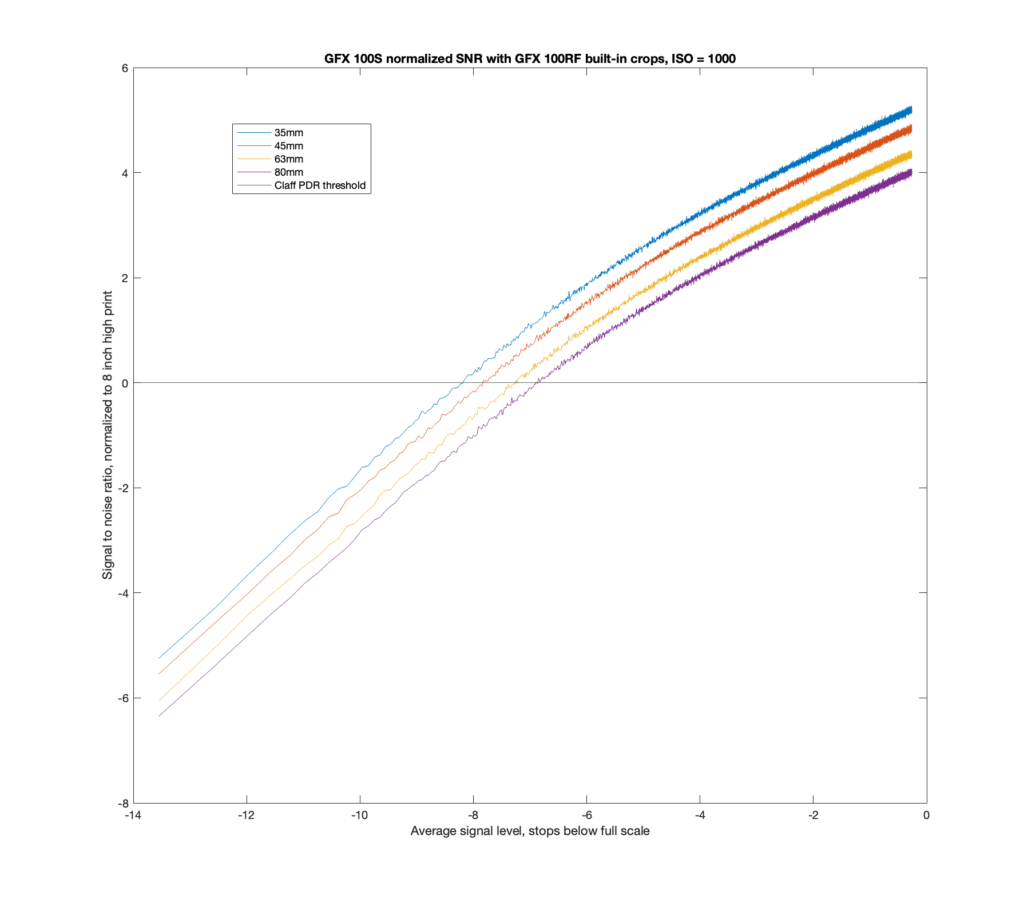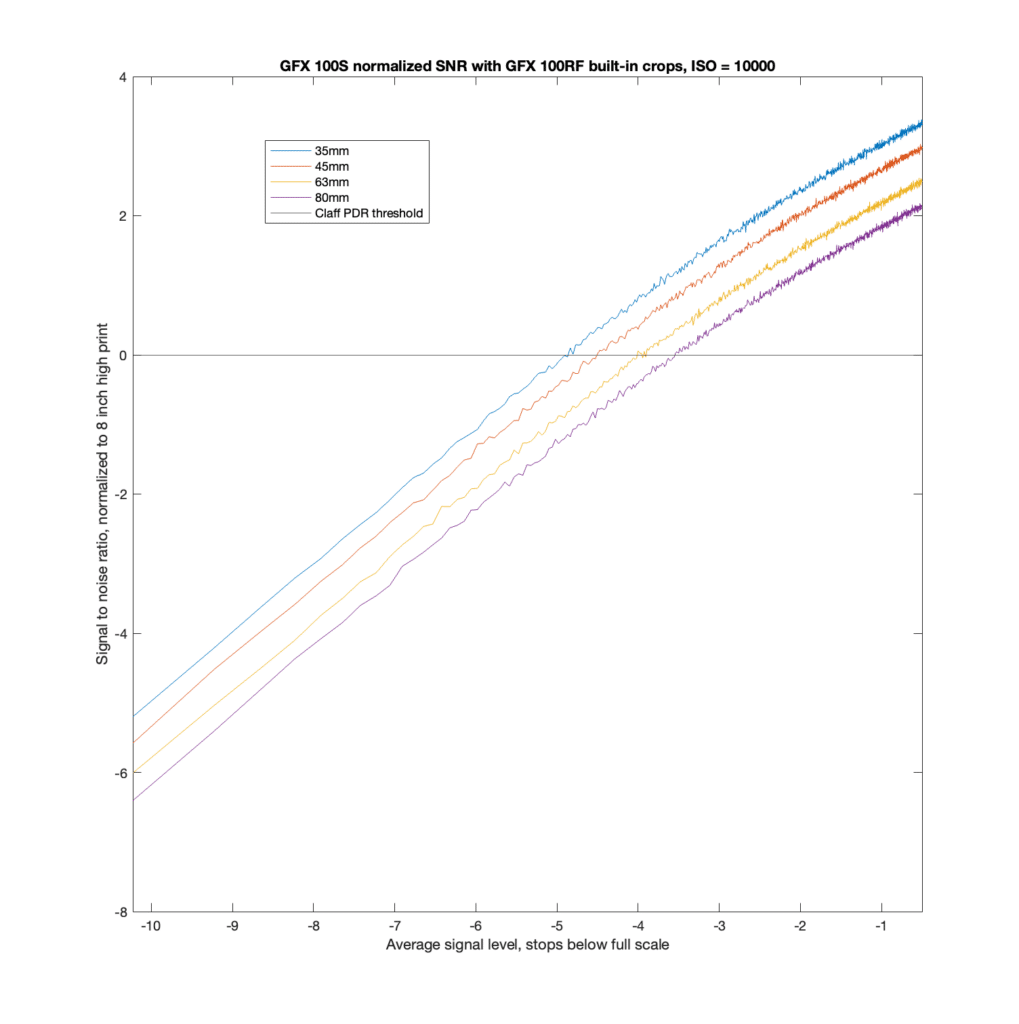I was bothered by the approximations that I made in yesterday’s post about what happens to dynamic range when you crop in camera with the GFX 100RF. So, today I went back and dusted off some Matlab code I’d written a few years ago to provide results with no approximations. I simulated the operation of a GFX 100S (for which I already had the data), and calculated the shift in signal to noise ratio versus exposure at a few different ISO settings and croppings.
The vertical axis is the normalized SNR. The horizontal axis is the average signal level in stops from full scale (clipping). There are four curves, one for each of the four built-in croppings in the GFX 100RF. They are labeled by equivalent focal length compared to that of a full frame 33x44mm image. 35mm is the actual focal length of the lens in the GFX 100RF, so that is the full format of the camera. The threshold for BIll Claff’s Photographic Dynamic Range metric is the horizontal black line.
At a higher ISO:
Note the x-axis shift.
At a nosebleed ISO:



Javier Sanchez says
So always crop in post if you must…
JimK says
The effects on dynamic range are the same whether you crop in camera or in post.
Javier Sanchez says
Having a hard time wrapping my head around this. For example, if you photograph a Xyla 21 chart showing a camera’s 10-stop range, but the chart is not taking up the whole frame, and then you crop into 2x to fill the frame with the chart, I can’t see how that would affect the 10-stop DR displayed in the image. Am I approaching this incorrectly?
JimK says
DR is full scale over average signal level at a specified signal to noise ratio. If you crop, you change the SNR.